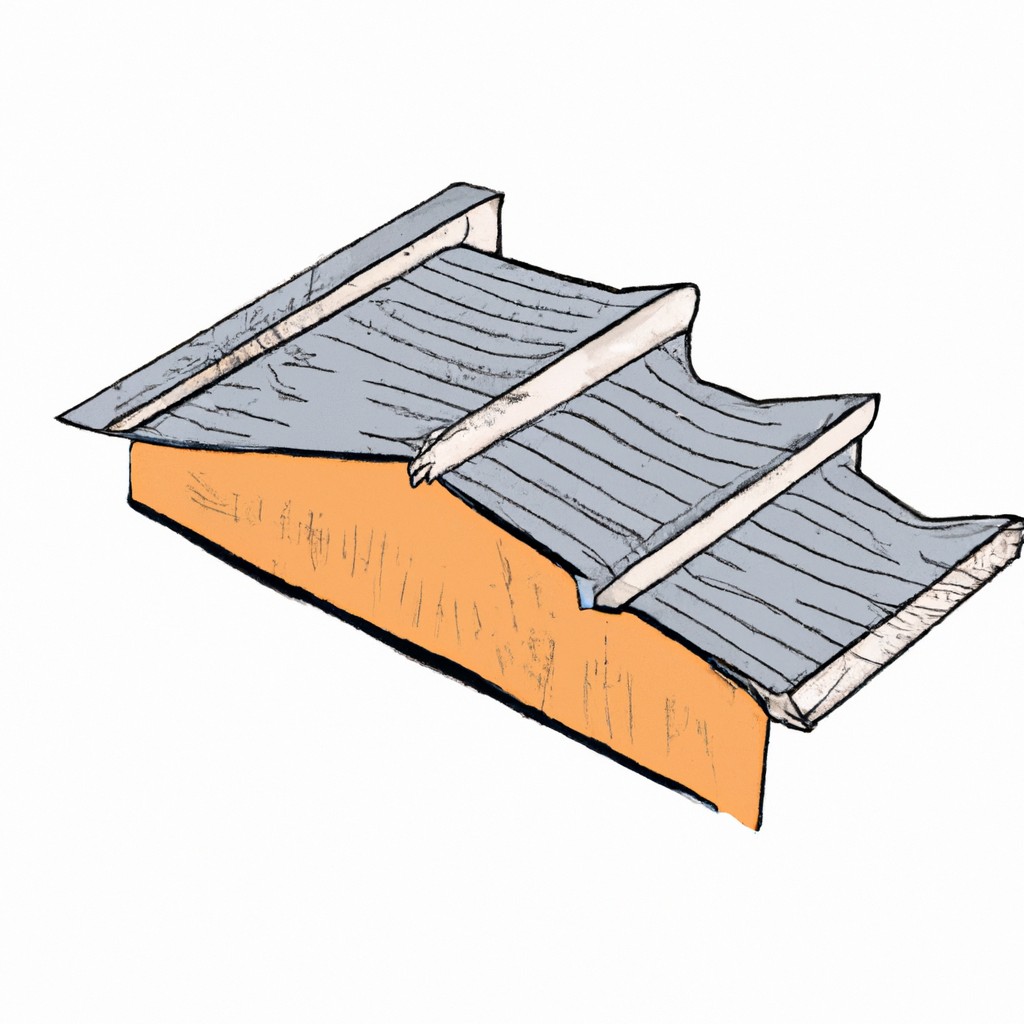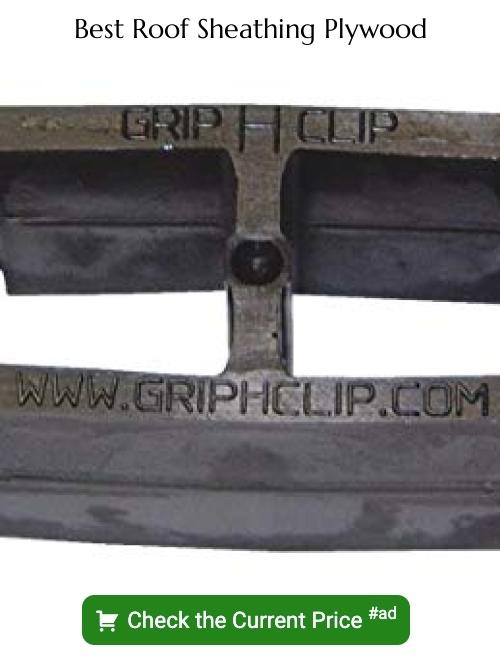Last updated on
Roof sheathing, a crucial element of a roofing system, serves as the base layer where other roofing materials are mounted, and this article provides an in-depth understanding of its function, installation process, and various types.
Key takeaways:
- Roof sheathing serves as a foundation and structural support.
- Types include plywood, OSB, and metal.
- Benefits include durability, flat surface for materials, moisture resistance, insulation, and fire resistance.
- Signs of damage include sagging, daylight gaps, water stains, softness, and missing nails.
- Considerations for replacement include structural integrity, climate, compatibility, ventilation, codes, and professional installation.
Understanding the Role of Roof Sheathing

Roof sheathing serves as the foundation for the roofing materials, like shingles or tiles. It consists of flat panels that contractors nail to the rafters or trusses, providing a sturdy base to secure the final roofing. This layer also adds structural strength, helping to distribute loads evenly across the roof.
Moreover, it forms a solid barrier, enhancing the roof’s rigidity and resisting sagging between the supports. Roof sheathing additionally acts as a layer of protection, helping to shield the interior of a home from weather elements and external damage before the outer roofing material is installed.
Types of Roof Sheathing Materials
There are primarily three materials used for roof sheathing:
1. Plywood: Favoured for its strength and stiffness, plywood comes in various thicknesses, typically ranging from 3/8 inch to 3/4 inch. It’s created by layering wood veneers at right angles to one another and bonding them under heat and pressure.
2. Oriented Strand Board (OSB): OSB is a popular and cost-effective choice made from pressed wood strands coated with adhesives. OSB panels also come in different thicknesses and are appreciated for their consistent quality.
3. Metal Sheathing: Although less common, metal sheathing is an option for roofs, especially on industrial buildings. It’s durable, fire-resistant, and ideal for low-slope or flat roofs.
Each material offers distinct advantages in terms of durability, cost, and installation ease. The selection often depends on the specific requirements of the roofing project and local building codes.
Benefits of Roof Sheathing
Roof sheathing serves as a foundational layer that bolsters your roof’s structural integrity. Properly installed sheathing can effectively distribute weight, which is especially crucial in areas with heavy snowfall or during the installation of heavy roofing materials like clay tiles. This equal weight distribution prevents sagging and maintains the roof’s shape over time.
Adding to the structural benefits, sheathing provides a flat surface for roofing materials to be attached. This seamless attachment base enables roofers to install shingles, tiles, or other materials more efficiently and securely, resulting in a more uniform and aesthetically pleasing finish.
Furthermore, sheathing acts as a critical barrier against moisture, which can cause mold growth and rot. By creating a secondary layer of defense, sheathing minimizes the risk of water infiltration into the attic and interior spaces. It also offers an extra layer of insulation, contributing to better energy efficiency by helping to regulate the temperature within the home, reducing heating and cooling costs.
In addition to these functional advantages, sheathing can also enhance fire resistance. When treated with fire-retardant chemicals, certain sheathing materials can offer an added layer of protection, slowing the spread of flames in case of a fire, potentially providing residents with valuable extra time to evacuate safely.
Signs of Roof Sheathing Damage
Visual indicators of compromised sheathing include sagging or dipping in areas of the roof, a clear sign that support structures may be failing. Inspection from the attic can reveal daylight piercing through gaps, which indicates holes or cracks. In addition, water stains or signs of leakage are telltale signals of sheathing that has been exposed to moisture and may be rotting. Musty odors within the attic can also suggest the presence of mold or mildew, a byproduct of persistent dampness affecting the sheathing.
Touch can be as revealing as sight; if the sheathing feels soft or spongy, it’s likely suffered water damage. Finally, shingle nails that miss rafters and joists are often a consequence of deteriorating sheathing that can no longer hold fasteners securely.
Regular inspections can identify these problems early, before they exacerbate into more serious structural issues.
Considerations When Replacing Roof Sheathing
When embarking on a roof sheathing replacement project, depth of knowledge is as crucial as the materials selected. The following points encapsulate critical considerations:
- Assess Structural Integrity: Prior to installation, examine the trusses and rafters for any signs of rot or damage. Ensuring a sound structure is imperative to support the new sheathing.
- Local Climate and Weather: Choose materials that withstand local weather patterns. For instance, areas with higher humidity may require sheathing with superior moisture resistance.
- Compatibility with Roofing Material: The chosen sheathing must be compatible with the roofing material to be used. This compatibility affects the longevity and performance of the roof as a whole.
- Ventilation and Insulation: Proper ventilation and insulation are vital to prevent moisture buildup and to maintain energy efficiency. These aspects should be considered before the sheathing is installed.
- Building Codes and Standards: Compliance with local building codes and industry standards is not negotiable. These regulations dictate the type of sheathing material, thickness, and method of installation.
- Professional Installation: Due to its complexity, roof sheathing replacement should be handled by professionals. An expert installation ensures durability and maximizes the lifespan of your roof.
FAQ
What is sheathing used for roof?
Sheathing, also known as roof decking, is the structural element of a roof system, providing a surface for the installation of shingles and other roofing components, with two main types being plank and sheet.
What is the best sheeting to use for roofing?
The best sheeting to use for roofing is OSB (oriented strand board) due to its strength and enhanced moisture-resistance.
What is the difference between roof sheathing and decking?
The difference between roof sheathing and decking is essentially nonexistent as they are the same thing, referring to the wooden boards that form the base of the entire roof system.
How often does sheathing need to be replaced?
The sheathing of a roof typically requires replacement if the house is more than 20 years old, subject to verification by a professional contractor through a roof deck inspection.
What are the different types of roof sheathing materials available?
Different types of roof sheathing materials include plywood, oriented strand board (OSB), and fiberboard.
How does the climate affect the choice of roof sheathing?
Climate significantly influences the choice of roof sheathing as regions with high humidity call for moisture-resistant materials, while areas with extreme heat or cold require sheathings with excellent thermal insulation properties.
How important is proper installation of roof sheathing?
Proper installation of roof sheathing is crucial as it provides structural integrity to the roof, supports roofing materials and prevents water damage.
Related
- When to Replace Roof: Your Guide to Roof Replacement Indicators
- How Often to Replace Roof: Your Detailed Guide to Roof Maintenance
- How to Insulate an Attic Roof Rafters: Easy Steps for Efficient Home Comfort
- Water Resistive Systems and Safeguarding Industrial Buildings Against Moisture Damage
- How Long Do Roofs Last in Texas: Understand Lifespan and Factors

